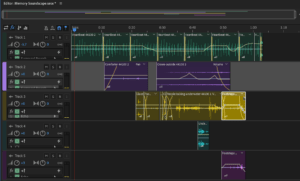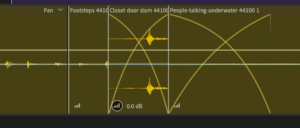

- Project Title: “No Justice, No Peace” or “This is America”
- Group Members: Emma Blosser & Gaby Juhala
III. Concept | Storyline:
1). For the narrative portion of our visual metaphor we are going to combine a variety of clips from the protests themselves, news reports on the protests, trial hearings, and speeches. (possibilities linked below)
- https://www.youtube.com/watch?v=ATPSht6318o
- https://www.youtube.com/watch?v=BF9qi-FTTz4
- https://www.youtube.com/watch?v=aF5wS9YzQ9k
- https://www.youtube.com/watch?v=4Vl4I0weXPU
- https://www.youtube.com/watch?v=77d7tye6Qv4
- This is America by Childish Gambino
- https://abcnews.go.com/US/timeline-impact-george-floyds-death-minneapolis/story?id=70999322
- https://www.youtube.com/watch?v=VVhFopNILE0
- https://www.youtube.com/watch?v=wmdpd2zgsmo
2). Our goal is to convey the message conveyed through the Black Lives Matter movement in America through the voiceovers of multiple speeches, news outlets, and audio clips from the protests themselves etc.
3). The focus will be on the 2020 BLM protests following the death of George Floyd and Breonna Taylor. The video clips will be from that time period and aid in furthering the narrative catalyzed by the outburst of protests seen in 2020, demonstrating how wide-reaching they were and the deep impact they had on breaking down and rebuilding the deeply flawed justice system in America.
4). The style/aesthetic we are going to try and pursue could possibly be in the noir genre of editing because of the fact that it will allow the viewers to focus on the content/message of the photos and video clips themselves rather than the colors which could distract from the overall narrative.
- Execution Plan:
1). For the Visual Metaphor Project we will strictly be using our cell Phone camera and audio recorder.
2). The main location for shooting is Portland, Oregon. Portland became known as the hub for the BLM protests in 2020. The videos used were shot from May-July 2020 with both clips from day and night time being included. Showing clips from both day and night allows for the message/narrative of just how widely recognized and impactful the movement was, it didn’t matter the day or time, people were always gathering and showing support for the movement.
3). Due to the fact that an event like a protest is so unpredictable, the quality of the filming might not be of the highest quality but considering the limitations to filming equipment and inability to meet in person as a pair I believe the content we have does a good job of conveying the narrative we hope to demonstrate through our visual metaphor.
4). How will you collaborate? How will you divide work? (Gantt Chart)
| Task | Owner | Start Date | Due Date | Duration | PCT of Task Complete |
| Audition audio editing | Emma | 04/26 | 04/30 | ||
| Premiere pro photo/video editing | Gaby | 04/30 | 5/5 | ||
| Premiere pro combination of audio file and photos/ videos | Gaby | 04/30 | 5/5 | ||
| Final tweaks/
revisions |
Gaby and Emma | 5/5 | 5/12 | ||


 any part of my memory in order to fit the parameters of the project. After lots of testing out different things, I figured out that for a lot of my sound clips the reverb with different impulses worked quite well to demonstrate what I was envisioning. I also found out whilst editing that I could make anchors along the volum
any part of my memory in order to fit the parameters of the project. After lots of testing out different things, I figured out that for a lot of my sound clips the reverb with different impulses worked quite well to demonstrate what I was envisioning. I also found out whilst editing that I could make anchors along the volum e line of clips and adjust the volume levels in that way instead of just through fading in and out, this allowed me to be more precise in specific areas, which added an extra layer of smoothness between sounds. T
e line of clips and adjust the volume levels in that way instead of just through fading in and out, this allowed me to be more precise in specific areas, which added an extra layer of smoothness between sounds. T he one part I struggled a bit with was the meshing together of two clips in trying to make them sound like one recording although they were two separate clips. I ended up figuring out how to make them sound the most similar by using echo and making the transition between the two much longer than I had previously done for other clips and it ended up sounding quite smooth.
he one part I struggled a bit with was the meshing together of two clips in trying to make them sound like one recording although they were two separate clips. I ended up figuring out how to make them sound the most similar by using echo and making the transition between the two much longer than I had previously done for other clips and it ended up sounding quite smooth.